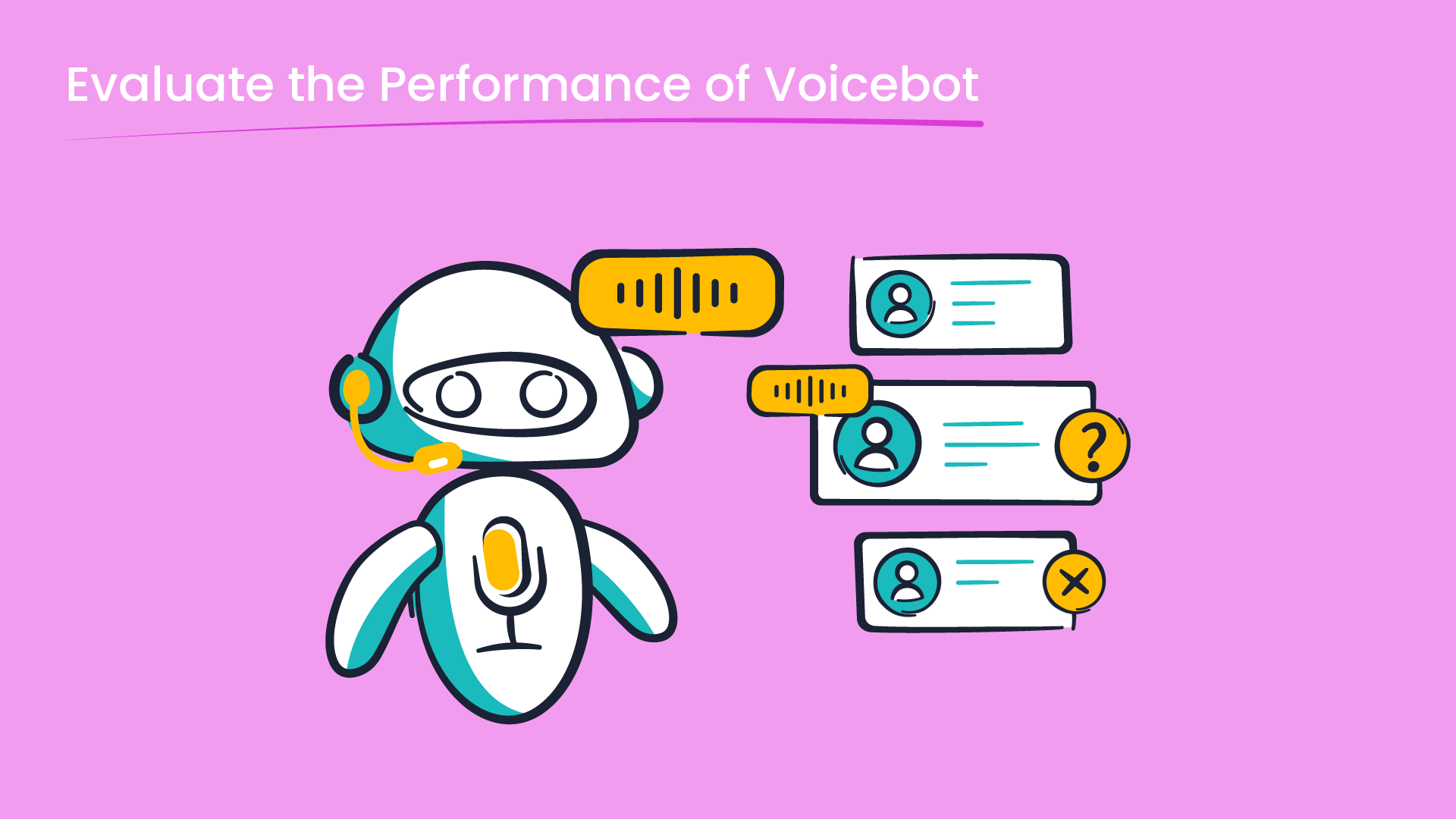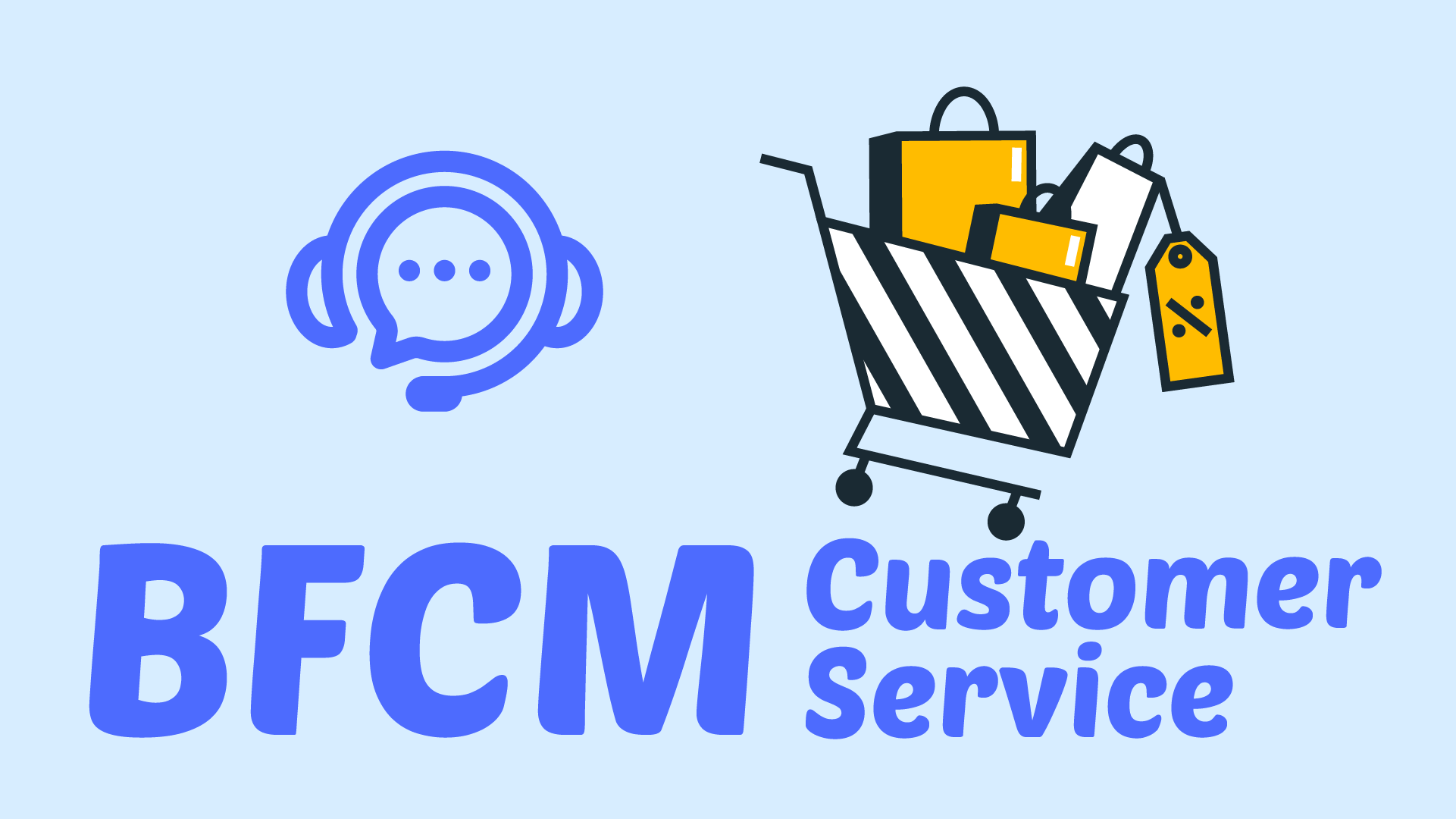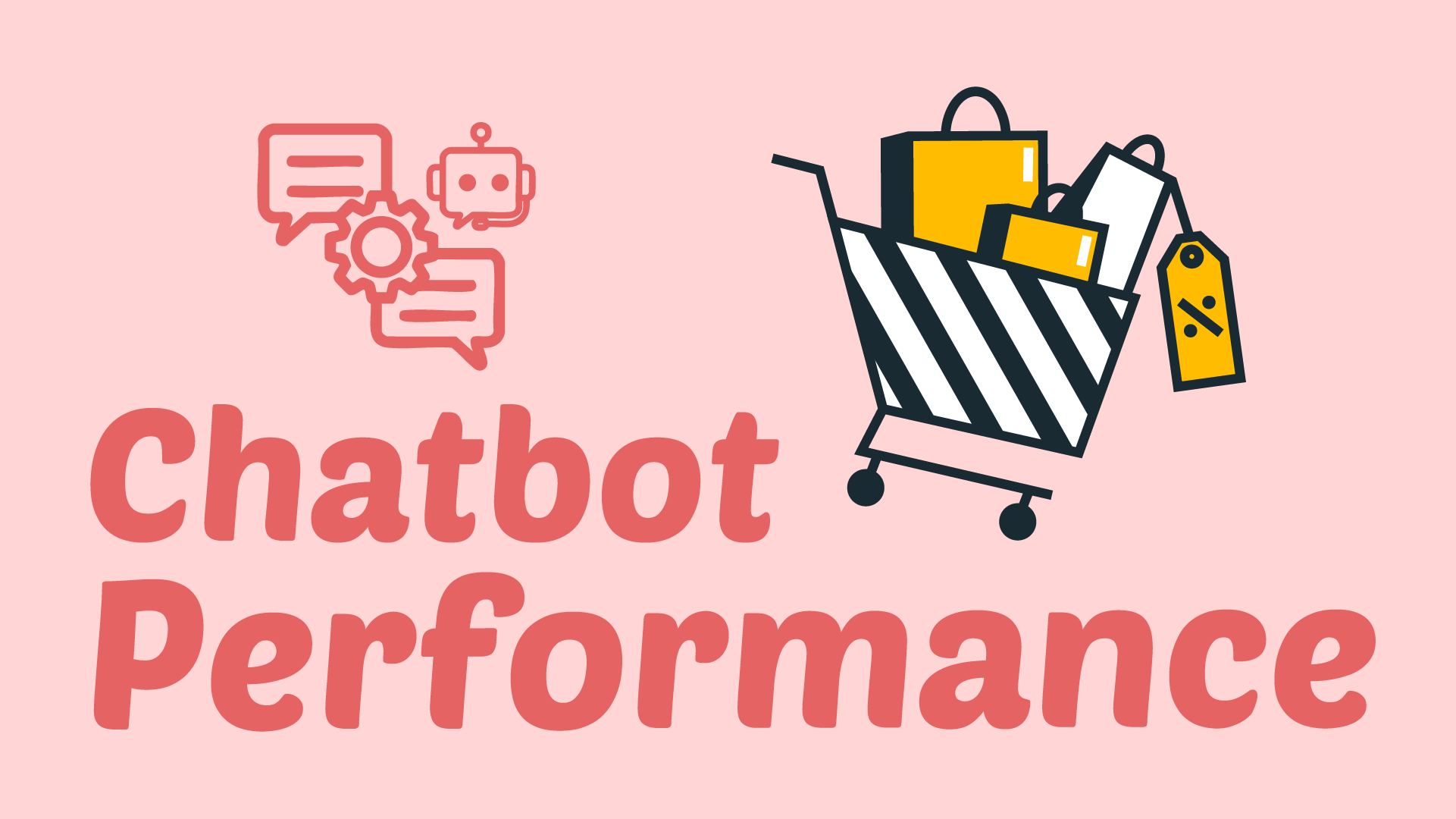Introduction
Picture calling your telecommunications company while there’s a network disruption. Rather than endless hold times or automated menus, there’s a friendly, knowledgeable voice that welcomes you immediately, knows you have an issue, and resolves it for you without the necessity of a human operator. That’s not in the future it’s what businesses are aiming to achieve with products like voicebots that offer intelligent customer service.
In this day and age of fast, customer-centric business, providing seamless, satisfying experiences is not a nicety it’s an imperative. Experience-centric brands gain trust, loyalty, and long-term growth. Welcome voicebots: smart digital assistants that can mimic human-like conversation, simplify service delivery, and automate customer interactions at scale.
But a voicebot is only half the solution. A sub-optimized one can undermine customer confidence—resulting in bad reviews or, worst still, customers leaving in silence. To avoid this, regular testing is essential. Testing your voicebot’s functionality ensures that it remains user-need and business goal-focused. Monitoring is now not just a best practice—it’s a strategic necessity.
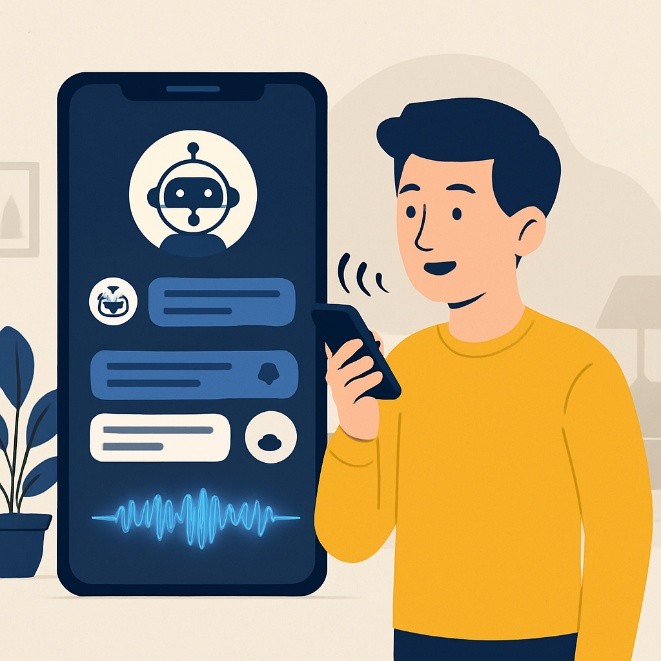
Why Voicebot Evaluation Matters
- Enhancing customer experience and brand trust- Customers anticipate fast, precise, and sympathetic assistance. A properly attuned voicebot delivers such support, providing a seamless and engaging customer experience. Testing regularly allows the detection of weak areas within conversations and maintains the bot in sync with customer demands.
- Improving business efficiency and return on investment- Precise and effective bots save handling time and reduce escalations. Not only does this slash operational expenses, but it also releases human agents to work on more intricate activities, thereby raising overall productivity.
- Keeping up with user behavior and ongoing learning- Observation of interactions aids the bot to develop through machine learning. By observing user input and feedback, companies can educate the voicebot to comprehend context, intent, and language behavior better over a period of time.
- Assisting scaling and automation goals- As your audience increases, assessing performance guarantees that the bot expands effectively without the loss of quality. Regular monitoring ensures consistency and reliability in tens of thousands of concurrent interactions.
Key Metrics to Evaluate Voicebot Performance
Voice Interaction Quality
- Speech recognition accuracy- The accuracy of words understood correctly.
- Intent recognition and response relevancy- The degree to which the bot recognizes user intentions.
- Naturalness and tone of voice- Natural-sounding tone and speech.
- Responding to interruptions or pauses- How it performs with pauses, corrections, or multiple intentions.
Operational Efficiency
- Average handling time (AHT)- The time it took to get through the interaction.
- First call resolution (FCR)- Percentage of issues resolved without the need for escalation.
- Escalation rate to human agents- Percentage of conversations passed to humans.
- Session completion rate- Number of calls the bot could complete from start to finish.
User Experience & Accessibility
- Prompts and voice response clarity- Clear and helpful responses.
- Personalization and context retention- Names, previous conversation context.
- Support for multilingual and local dialects- For different geographic areas.
- Accessibility features (e.g., for speech-impaired users)- Capabilities for people with disabilities.
Evaluation Perspectives
1. Customer-Centric Evaluation
User Satisfaction Ratings: Collect CSAT or NPS after interactions with the bot. These scores provide overall impressions from users and can perpetuate value (or change) trends related to user satisfaction over time.
Intent Recognition Accuracy: Make sure the bot is able to identify and clearly understand diverse types of user intents. The higher the accuracy, the easier the conversations and the less issues with the users having to be de-escalated.
Clarity and Naturalism of Voice: Evaluate the ease of understanding and flow of conversation within your sample size. A more natural voice encourages users to interact with the bot in a more genuine way and will promote trust.
Personalization: Evaluate how often the bot is able to use context from previous conversations to make the experience more personal. Personalization is key for making the user feel represented and listened to.
Feedback Loop: Use some form of survey or rating to iterate on the system. With real-time feedback, the systems can be iterated on and issues quickly resolved.
Accessibility: Test for various accents, given ambient noise, and, in some cases, interruptions! The more people we test the bot with, the more confident we can be that all users will have a similar experience with the bot, regardless of how they engage with the bot.
2. Business-Centric Evaluation
Cost Savings: Analyze decreased support costs through automated processes. Seems obvious that less human activity equals more cost-savings.
Call Deflection Rate: Percentage of queries answered with no human intervention. A higher call deflection rates indicate a successful voicebot system.
Lead Generation: Measure form fill or follow-up action initiated or assisted by the bot. Voicebots can effectively assist prospects into the conversion funnel.
Sales Funnel Impact: Examine conversion rates assisted by the bots upsell recommendations. Bots can increase revenue thresholds significantly through smart acquaintances of products and/or services.
Retention and Loyalty Metrics: Analyze how the voicebot impacted churn rates. We all know better support often displaces their customers and customers who stay, create higher customer loyalty and return transactions.
3. Technical Evaluation
CRM Integration: Validate seamless data sharing for personalized interactions. Integrated systems enable contextual conversations.
Uptime and Reliability (SLA): Validate reliable access to the service. Downtime negatively impacts customer confidence and satisfaction.
Scalability: Observe performance during peak access. A scalable solution meets growing user demand without scalping.
Latency and API Responsiveness: Test delay in responses. Fast responses create a followable user experience.
Data Security and Compliance: Check encryption and privacy standards. Adhering to data regulations builds credibility and reduces risk.
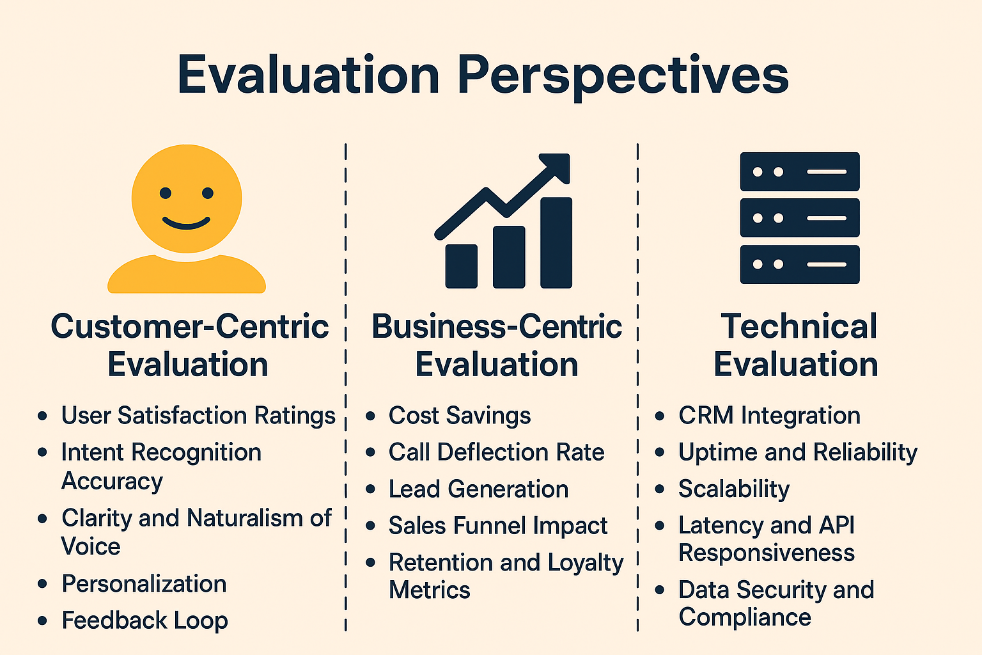
Benchmarks and Real-World Standards
Response Time: Leaders such as Google Assistant maintain <1s average.
Accuracy: Alexa and Siri aim for 95%+ intent accuracy.
Availability: Leaders in the industry have >99.9% uptime.
| Feature | Voicebot | Chatbot | Live-Chat Agent |
| Response Time | ~2–3s (Due to speech-to-text processing) | ~1–2s | ~10–15s |
| 24/7 Availability | Yes | Yes | No |
| Personalization | Moderate | Moderate | High |
| Emotional Intelligence | Low–Moderate | Low | High |
| Escalation Handling | Moderate | High | Very High |
| Cost Efficiency | Varies (depends on tech stack, use case) | Moderate | Low |
| Multitasking Capability | High | High | Low |
| Setup & Maintenance Effort | Low | Moderate | Moderate |
Challenges & Pitfalls to Avoid
Voicebots provide a transformational shift (in a very real sense) in how businesses interact with customers. However, deploying voicebots can come with its own unique challenges as well. The challenges don’t come from just the decision to deploy a voicebot or not, but often stem from the inadequate management of these unique challenges or pitfalls. If these challenges are not effectively managed, it could render the voicebot ineffective, and ultimately diminish user trust.
1. Too Much Automation –No Human Backup: Over-automating will frustrate users when voicebots cannot recognize emotional and complex requests. Having a visible and efficient process to power users to human agents is important for the user experience (Sobot).
2. Noise and Unrecognizable Speech: Voicebots often have difficulty when users are in noisy or dynamic environments and will repeat errors over and over. Putting in place adaptive voice recognition, like Sobot’s real-time voice recognition models, mitigates misinterpretation in noisy environments.
3. No Emotion or Human Intelligence: Voicebots are unable to deliver empathy and can mishandle users who are upset, or emotive. Sobot provides a sentiment-detection capability that escalates when negative emotions are determined to be present.
4. Old Script – Static Logic Model: If a bot is operating off of out-of-date data or decision trees that do not adjust, it will become obsolete fairly quickly. Sobot reduces this risk by continually updating flows from real-time conversational data and ongoing behavioral trends.
5. No Context – No Personalization: Voicebots that are unaware of contextual user information, or past engagements will feel more robotic, and repetitious. Sobot enhances conversations by taking CRM data and ongoing session memory into account, so that every interaction feels more positive and personalized.
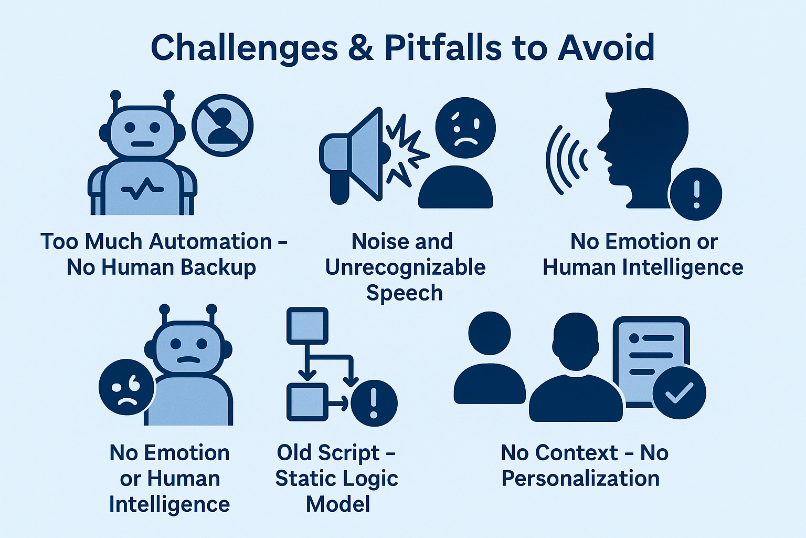
Best Practices for Improving Voicebot Quality
Improving voicebot performance is not a one-time commitment, it is a commitment that requires a personalized data-based user perspective. The following best practices are respect the ability of your voicebot to stay pleasant, responsive to change, and accurate.
1. Train on real conversations– Train the voicebot on real customer conversations to better develop its natural language understanding (NLU). This will ensure that the bot models actual speech patterns, slang, and intent detection, just like Sobot does when training their NLU training loops.
2. Build a Continuous feedback loop- Regularly collect user feedback and conversation analytics. This will help improve the bot’s responses and flows. For example, Sobot’s AI voicebots use dynamic learning models which develop with every interaction, and therefore are progressively more accurate (quality increasing over time).
3. Keep a hybrid human & AI model- You can keep a springboard for human agents when the bot’s limitation determines whether the issue is too sensitive and unforgiving as deep or complex judgment requires empathy. Sobot’s intelligent routing will escalate to the human agent seamlessly.
4. Localize Language, Tone, and Culture- Localize your bot’s language, tone, and phrasing to the region and cultural nuances. For instance, Sobot builds trust with diverse regional audiences and consumers by providing multilingual and sundry tone and linguistic models.
5. Test the bot in a natural noisy environment – Be sure to test the bot in realistic conditions comprising other background noise, different accents, interruptions, and so on. This is how you test the capability of the bot, since, as Sobot explained, testing requires serious testing environments to ensure the tool is most effective when the user deployed it live.
6. Up-to-date Scripts and Use real-time data- Use real-time data to amend your conversational flows based on customer behavior and intent, otherwise the conversations risk going stale. Sobot voicebots learn (and adapt) all the time, using behavioral parameters; thus ensuring conversations are relevant and effective.
Sobot’s Voicebot in Action
Among numerous players in the field, Sobot’s voicebot stands out as a gold standard of smart automation. It mixes sentiment analysis, multilingual capabilities, CRM-based personalization, and dynamic learning cycles—all in real time. Unlike many legacy bots, Sobot’s offering is specifically designed for noisy, high-stress environments where precise, human-like interaction matters most. Its hybrid architecture astutely ramps up to human agents where emotional signals or sophistication are required, providing smoother interactions and greater user satisfaction. Through ongoing refinement of conversation flows against actual behavioral data, Sobot provides contextual, flexible, and genuinely customer-centric interactions.
Conclusion
But let’s not forget that deploying a voicebot is not an endpoint in itself; it’s merely the start of a far bigger adventure.
The true worth of a voicebot is revealed with time. It is in how effectively it listens, adapts, and learns. This implies that companies need to step past mere deployment and invest in continuous assessment, practical testing, and human-centric design. It is only then that voicebots can appropriately grasp intent, deal with nuance, and provide useful, empathetic interactions that are natural and intuitive.
Voicebot assessment must be multidimensional—taking into account not only performance measures such as response correctness or escalation level, but also more abstract aspects such as user satisfaction, tone of voice, and context maintenance. Ideal solutions do more than just process requests—they anticipate user needs and continuously learn from each interaction.
What really differentiates effective voicebot strategies is that they find a balance between automation and empathy. While AI may scale efficiency, human oversight guarantees warmth, trust, and flexibility are still in the conversation. Hybrid models, fueled by intelligent escalation protocols, ensure difficult or emotionally charged questions always make it to the correct person at the right moment.
And lastly, don’t underestimate the power of real data. Voicebots that learn from actual conversations—transcending languages, dialects, and varying environments—get better, more reactive, and more conversational with time.
In short: voicebots are no longer a future enhancement—they’re a strategic imperative. But as with any great tool, they need to be watched over, measured, and honed in order to achieve maximum effect. Companies that are dedicated to ongoing refinement and customer-focused testing will not only deliver improved service—They’ll unlock deeper relationships, greater loyalty, and true competitive advantage.
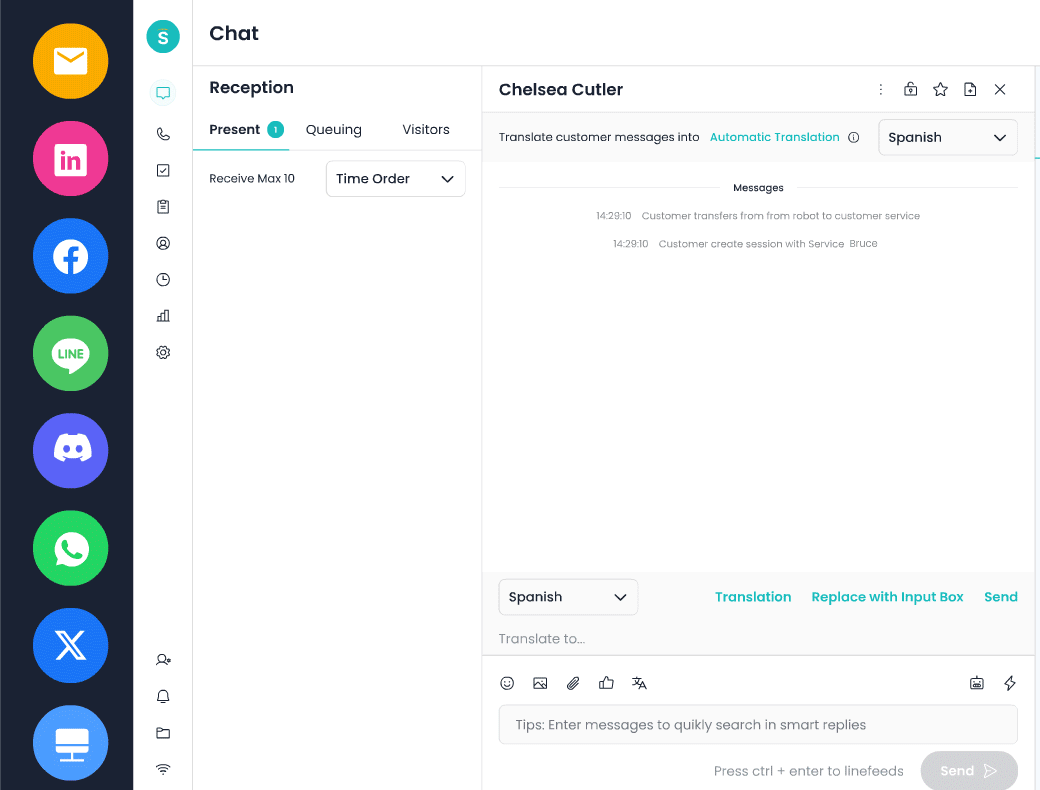
FAQs
What is a voicebot, and how is it different from a chatbot?
A voicebot communicates with users in natural speech via speech recognition, whereas chatbots are based on text input and output.
Why is it necessary to test voicebot performance on a regular basis?
Regular testing makes it possible to detect weak areas, enhance user experience, and make the voicebot suitable for evolving customer behavior.
Are voicebots cost-effective?
It varies by use case, implementation, and size. They tend to lower operational expense but have larger initial setup expenses compared to chatbots.
Do voicebots support emotional or sophisticated questions?
Partially. Voicebots with sentiment detection are able to recognize frustration and route the call to a human agent when appropriate.
How do voicebots learn and get better over time?
Through machine learning, real-time feedback, and ongoing training on actual customer interactions.
What makes Sobot’s voicebot unique?
Sobot’s voicebot adapts in real-time using AI-based learning loops, handles noise interference effectively, and integrates deeply with CRM systems for contextual, multilingual, and sentiment-aware conversations.
Can Sobot’s voicebot handle emotional responses or escalate to human agents?
Yes. Sobot’s bot includes sentiment-detection technology that senses frustration or confusion and routes the user to a human agent when necessary, ensuring empathy and effectiveness.
